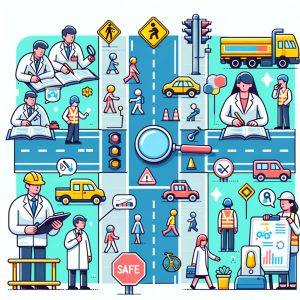
Three Reasons People Risk Their Lives at Train Crossings
Every day in India, someone tries to “beat the train.” Too often, they don’t make it. A new study of over 7,000 road users reveals why people—motorists, cyclists, and even pedestrians—keep taking that deadly gamble.
Distraction Is the Silent Killer
The study found that engagement in secondary activities—like checking a phone or chatting—was the single biggest factor in repeated crossing violations. Whether behind the wheel or on foot, distracted users were far more likely to sneak past gates or misjudge train speed.
Why it matters: Distraction lowers situational awareness, leading people to take risks they’d never take when focused. The researchers suggest solutions like flashing road lights and voice alerts to capture attention even when eyes or ears are elsewhere.
Pedestrians and Cyclists Take the Biggest Risks
Non-motorists—pedestrians and cyclists—were the most frequent repeat offenders. Nearly 40% admitted to regularly violating signals, often trying to cross after hearing a train horn or even seeing it approach. These “beat the train” moments put them in the deadliest possible position—where a single misstep can be fatal.
Why it matters: The study found that younger and less-educated individuals were more likely to take these chances. Simple fixes like pedestrian bridges, visual warnings, and targeted safety campaigns could save hundreds of lives.
Familiarity Breeds Risk
People who crossed the same tracks daily—on their way to work or school—were the most likely to break the rules. Familiarity can trick our brains into underestimating danger. In contrast, first-time or infrequent users tended to wait safely.
Why it matters: This insight suggests safety isn’t just about engineering—it’s about changing habits and culture. Periodic education, consistent enforcement, and community reminders can disrupt risky routines before tragedy strikes.
The Big Picture:
This research highlights a simple truth: technology can help, but awareness saves lives. Reducing distractions, upgrading crossings, and reminding commuters that trains always win the race can prevent thousands of unnecessary deaths.



